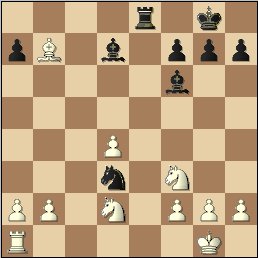
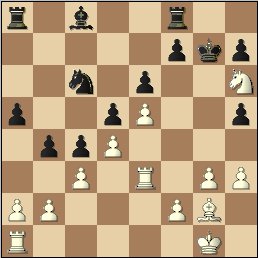
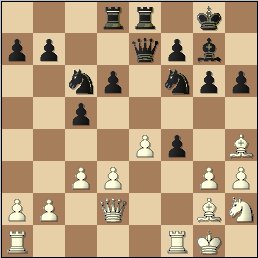
Improve your Chess via Active Learning
ACTIVE LEARNING is any strategy that involves students in doing things and thinking about the things they are doing (*)
You could study the following material either by skipping the test and going directly to the lecture. Or start by attempting to figure out on your own what is going on in each of the positions I will be talking about and then proceed to the lecture. If you chose the latter, spend 5-15 minutes on each diagram and record your evaluation and move / plan for the side whose turn it is and sample variations. Then compare your ideas with mine. Let me know how you like the test and the lecture
Test yourself:
All Positions:
1. Check whose move it is.
2. Evaluate position (i.e. White is Better, or Black is Winning, or Equal...)
3. Find the Best move and, if necessary, support it with variations.
4. Answer the question (if there is a specific one)
 |
 |
 |
| 1. Black to Move. What would you play? What do you think about 1...Re2? | 2. White to Move. What would you play? What do you think about 1.Rf3? | 3. White to Move. What would you play? What do you think about 1.Rxf4? |
STOP - Lecture begins below.
(Mis)Adventures of the Rook
A Rook is the second most valuable piece after the Queen (not counting the 'priceless' King). Just like the Queen, it is a long-range fighter that can do a lot damage. Also, just like the Queen, it can be an easy target, thus often prefers to operate from a safe distance. It is rather clumsy in cluttered positions and can be attacked by minor pieces, pawns and even the King (this is something that the Queen doesn't need to worry about).
Recently, while reviewing games of one of my students, I've stumbled across several situations in which he 'issued wrong assignments' for his rooks. Well, as I discussed these problems with him, I thought it might be beneficial to share the fragments with you.
First the materials and later then the draft of the lecture were sitting on my desk for a few weeks as I was very busy. Finally, today, something happened that made me allocate time and finish the lecture. That something was a blitz game on ICC. Here is the fragment:
LionHeart (2600) - NN (2600)
 |
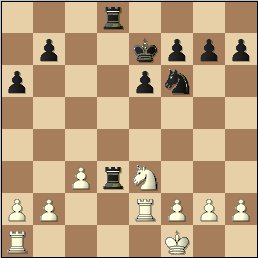 |
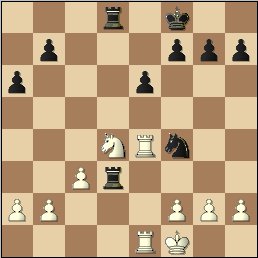 |
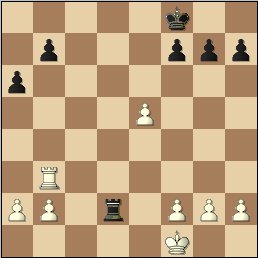 |
| A Black to move | B White to Move | C Black to Move | D Black to Move |
| After 1.Nc4xBe3. | After 1...Rd2 2.Re2 R2d3 | After 3.Nf5+ Kf8 4.Nd4 Nd5?! 5.R1e1 Nf4 6.Re4+/- | After 6...e5! 7.Rxe5 R3xd4 8.cxd4 Nd3 9.Re3! Nxe5 10.dxe5 Rd2 11.Rb3! +/- |
[Diagram A] At the moment, Black has control over the d-file. White is about to challenge Black via 2.Rad1. So, Black ventured with his Rook to d2. Actually a harmless move as White has two alternatives. I considered 2.Rad1 and, if Black takes on b2, White can force a draw. 2...Rxb2 3.Nf5+ Ke8 4.Nxg7+ Ke7 5.Nf5+. I decided to play 2.Re2, keeping the Nf5+ trick for later. Instead of trading, Black retreated - 2...R2d3.
[Diagram B] And here, my opponent was unpleasantly surprised with 3.Nf5+ Kf8 4.Nd4. Not sure if he immediately realized that his Rook was trapped (it was a Blitz game after all), but instead of preparing e6-e5 to free the Rook, he made a couple of pseudo-aggressive moves with the Knight - 4...Nd5?! 5.R1e1 Nf4 6.Re4+/-
[Diagram C] Now, if the Knight moves, White has Ke2 forcing Rxd4 with extra exchange. Black found a way to escape only at the price of a pawn after 6...e5! 7.Rxe5 R3xd4 8.cxd4 Nd3, winning back exchange. After 9.Re3! Nxe5 10.dxe5 Rd2 11.Rb3! (11.Re2? Rd1+ 12.Re1 Rd2=), White was up by a pawn. [Diagram D]
Compare the first diagram (A) vs. the last one (D). White really did nothing spectacular, except a few defensive moves. Black's loss is purely due to his 'active' rook play.
Now, let's get back to the three diagrams above from the games of my 1200 rated student.
| #1
Black is down by two pawns, but he has a pair of Bishops and fairly active pieces. Still White has a solid advantage, no matter which of the many reasonable moves candidates Black picks - 1..Nxb2; 1...Rb8; 1...Nf4; 1...Bf5, etc.... In the game, Black decided to activate his Rook and plugged it on the second rank - 1...Re2. Well, White responded with 2. Ba6 and Black's attack was finished.
|

Black to Move |
| #2 White had a promising attack just a few moments ago, but allowed the trade of Queens and left his Knight without an escape square. The best move here is 1.Nf5, getting a couple of pawns for the Knight. After 1...exf5 2.Bxd5, White has excellent compensation due to Black's compromised pawn structure. Instead, White played 1.Rf3 Kxh6 2.Rf6+ Kg7 3.Bf3. Winning pawn h5 wasn't sufficient; the Rook on f6 is more of target then a threat to Black. |

White to Move |
| #3
Black’s last move was e5xf4. White has several obvious moves candidates - 1.Qxf4, 1.Rxf4, and 1.gxf4, but they all are inferior at best. In the game, White captured with the Rook, but instantly regretted his decision. After 1.Rxf4? g5! 2.Bxg5 hxg5 3.Rf5 Nh7, White doesn't have much for the Bishop (only one pawn). White gets one more pawn for his Bishop after 1.Qxf4? g5 2.Bxg5 hxg5 3.Qxg5, but it is not enough. With 3...d5! blasting White's pawn chain, Black should be able to convert his advantage. 1.gxf4?! runs into an unexpected 1...Nxe4! and, in spite of all the dangers, Black should come out from all this complications ahead by a pawn. Thus, the best choice in this position is an intermediate capture 1.Bxf6, then capturing the pawn f4 on the next move. After the balance is restored, White is at least equal. |

White to Move |
Summary: when you have an opportunity to activate your rook, first make sure that it is the right strategic decision. Then make certain that (a) it will have a way out and (b) it won't be an easy target for opponent's pieces.
==============================================================================================
What do you think about this article? How did you do? For comments send email or this
form
More on chess training (serious and enlightening)
|
|
Chess Exam and Training Guide (2004) $24.95 + shipping Chess Exam and Training Guide: Tactics (2007) $19.95 + shipping CE + CE Tactics (Holiday Special! Free chess cartoon calendar $8, while supplies last) - $39.95 - insured shipping in US is included |
Copyrighted @ 2008 Igor Khmelnitsky
For comments or permission to reprint please send inquires via email or this form
(*Bonwell, C., & Eison, J. (1991). Active learning: Creating excitement in the classroom (ASHE-ERIC Higher Education Report No. 1). Washington, DC: George Washington University, p. 2)